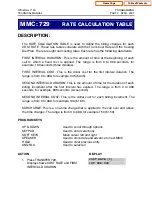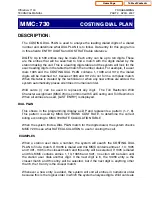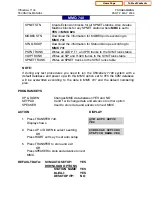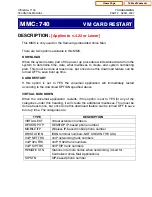
OfficeServ 7100
PROGRAMMING
TECHNICAL MANUAL
PART 2 APRIL 2007
MMC: 726
GENERAL RULES
1. 201 is talking to a trunk and presses TRANSFER plus the station number, but
the station is forwarded to VM/AA and VM/AA answers. When this happens, if
201 presses TRANSFER again to return to the trunk, the VM/AA port is not on
hold. It is disconnected.
2. A VM/AA port leaves a message indication for a station. When the station returns
the message, any available port in the VM/AA group should ring, not only the
one that left the message.
3. A VM/AA port leaves a message for a station. When the station returns the
message, the MESSAGE LED is not automatically turned off. If a VM/AA system
turns on the MESSAGE LED, the VM/AA system must turn it off.
4. If DTMF call progress tones are not enabled, the system sends regular call
progress tones (see Item # 3).
5. When a VM/AA port calls a station that is in the AUTO ANSWER or VOICE
ANNOUNCE mode, the keyset will be forced to ring.
6. All calls to a VM/AA port or group ring with C.O. line ringing cadence, not
intercom ring cadence.
EXAMPLES OF VM/AA OPERATION (IN BAND DTMF DIGIT STRING)
In the following example, all call and type data is turned on unless otherwise stated.
x is the separator digit, all-default values are used in these examples and [ ] is not
used.
A DIL 701 calls a VM/AA port or group:
[ * ]+[701]+[ ]+[
]
In the above example, if C.O. information is not used:
[ ]+[ ]+[ ]+[ ] (Nothing is used)
DIL 701 calls a call-forwarded station (205):
[ # ]+[205]+[ X ]+[701]
In the above example, if forward information is not used:
[ ]+[205] +[ X ]+[701]
In the above example, if forward and DN2/C.O. information is not used:
Home Page
Table of Contents
















































